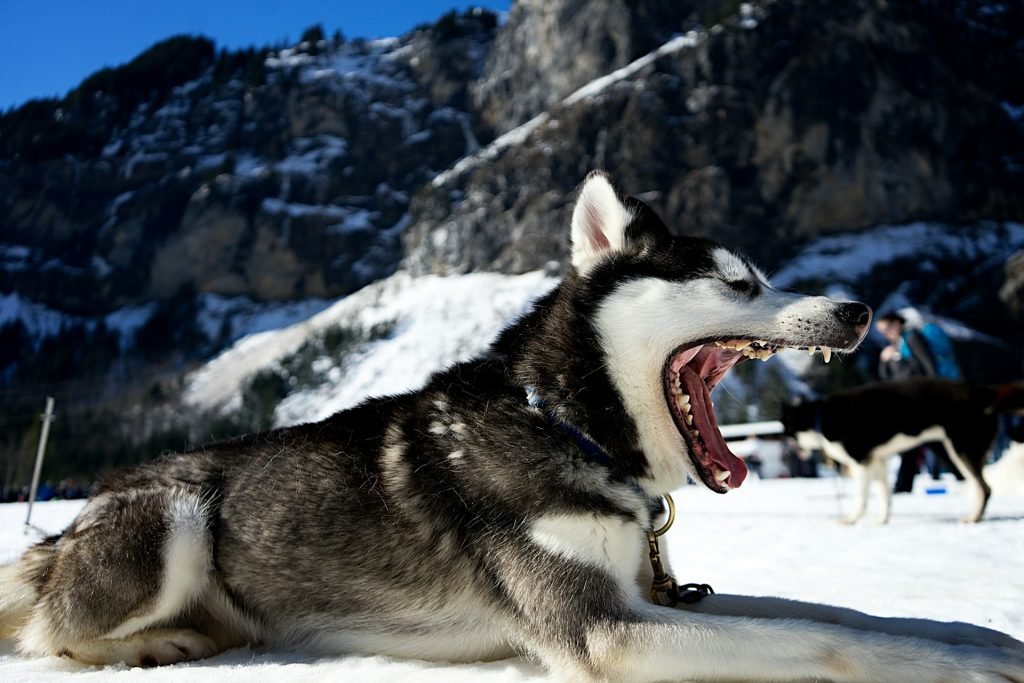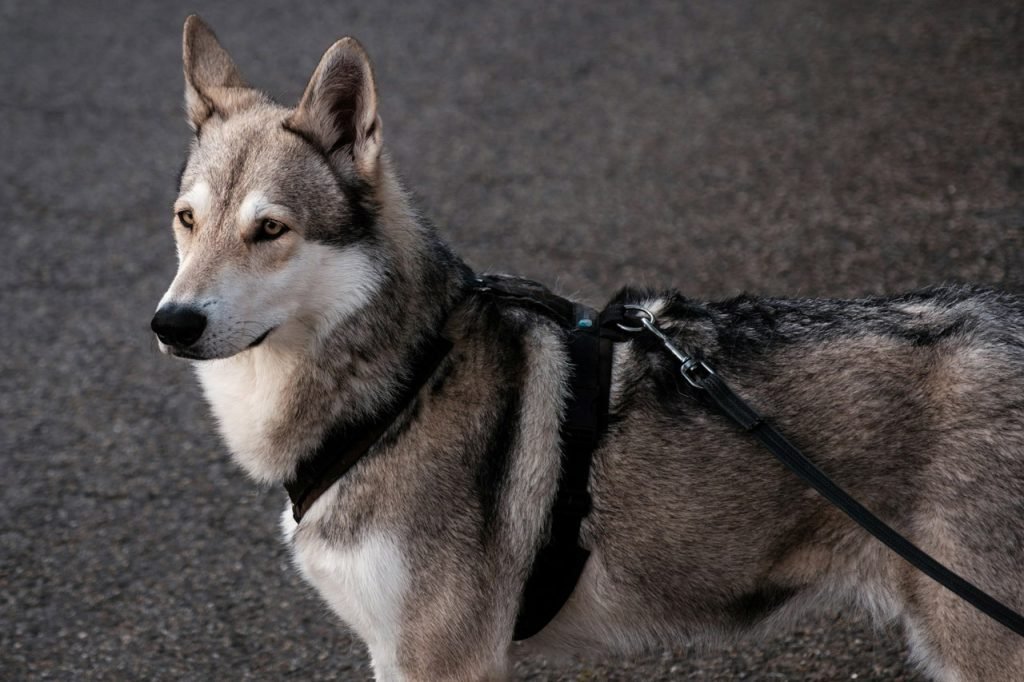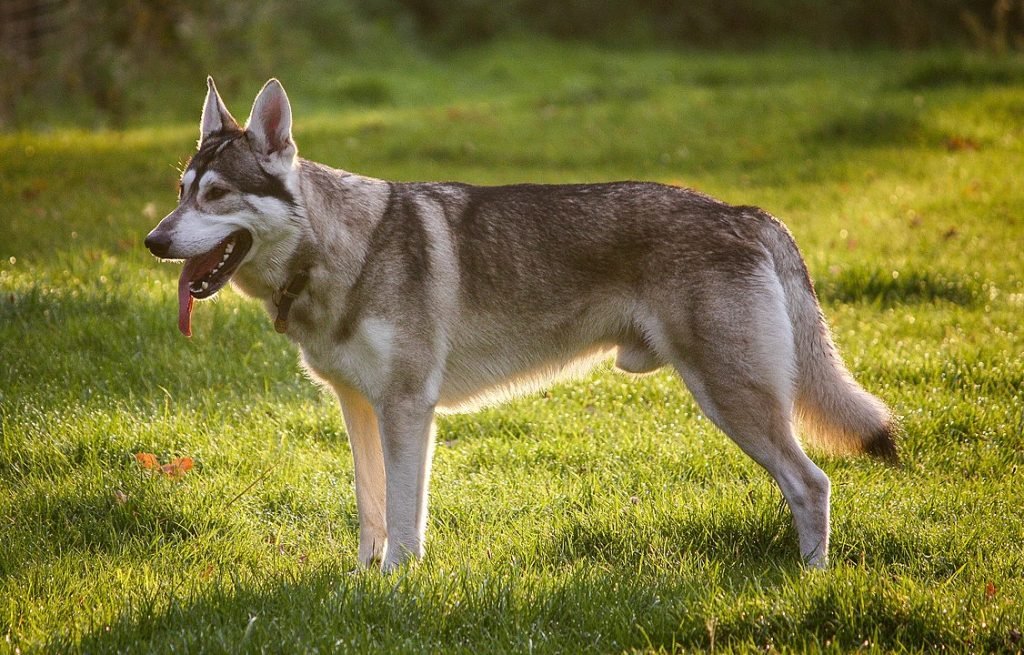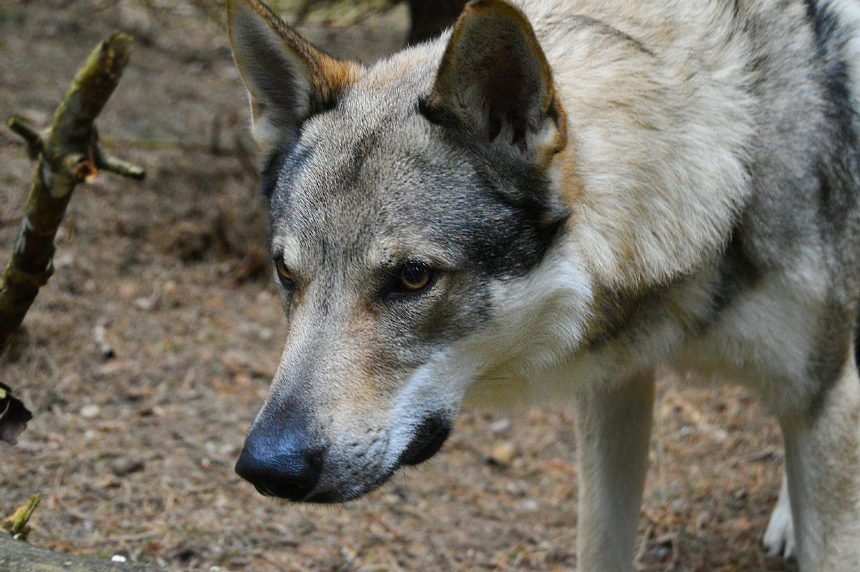In the realm of canine companionship, certain breeds evoke a primal allure, reminiscent of their wild ancestors—the majestic wolves. For enthusiasts who are captivated by the untamed spirit and beauty of wolves, selecting a dog breed that embodies these qualities is a natural choice. In this comprehensive guide, we delve into the world of dog breeds that appeal to wolf lovers. We’ll explore the top 10 breeds renowned for their wolf-like characteristics, from their striking appearance to their loyalty and intelligence.
Understanding the Appeal of Wolf-Like Dog Breeds
The allure of wolf-like dog breeds lies in their uncanny resemblance to their wild counterparts. From their sleek coats to their piercing eyes and agile movements, these breeds exude an aura of wilderness that resonates with wolf enthusiasts. Moreover, their innate intelligence, loyalty, and adaptability make them not only captivating companions but also versatile partners in various activities, from obedience training to outdoor adventures.
Dog Breed #1: German Shepherd

Origin: Germany
Appearance: Muscular build, erect ears, dense double coat
Temperament: Intelligent, loyal, confident
Suitability: Ideal for active individuals or families, excels in obedience and protection work
The German Shepherd tops our list as one of the most iconic wolf-like breeds, revered for its striking appearance and unwavering devotion. Developed in Germany in the late 19th century, these versatile canines were originally bred for herding and guarding purposes. With their keen intellect and innate athleticism, German Shepherds excel in a wide range of roles, including police and military work, search and rescue operations, and competitive sports such as agility and obedience trials. Their distinctive wolf-like features, coupled with their unwavering loyalty and protective instincts, make them cherished companions for discerning enthusiasts.
Fun Fact: Rin Tin Tin, a rescued German Shepherd, rose to fame as a Hollywood star in the 1920s, starring in numerous films and TV shows.
Dog Breed #2: Siberian Husky

Origin: Siberia, Russia
Appearance: Medium-sized, dense double coat, distinctive facial markings
Temperament: Energetic, independent, friendly
Suitability: Well-suited for active individuals or families, thrives in cold climates
Originating from the vast expanse of Siberia, the Siberian Husky embodies the resilience and endurance of its arctic ancestors. Bred by the Chukchi people for sled-pulling and transportation in harsh winter conditions, these spirited canines possess a strong sense of wanderlust and an insatiable appetite for adventure. With their striking blue or multicolored eyes, wolf-like appearance, and boundless energy, Huskies captivate the hearts of wolf lovers around the world. While their independent nature may present training challenges, their affectionate demeanor and playful spirit make them beloved companions for those who embrace their wild side.
Fun Fact: The famous Balto, a Siberian Husky, led the final leg of the 1925 serum run to Nome, Alaska, delivering life-saving diphtheria antitoxin to the remote town.
Dog Breed #3: Alaskan Malamute

Origin: Alaska, United States
Appearance: Powerful build, dense double coat, wolf-like appearance
Temperament: Strong-willed, affectionate, loyal
Suitability: Best suited for experienced owners, thrives in active households
Renowned for their strength, endurance, and rugged beauty, Alaskan Malamutes are another breed that captures the essence of their wolf ancestors. Bred by the native Inuit people of Alaska for hauling heavy sleds over long distances, Malamutes possess an indomitable spirit and an inherent love for the great outdoors. With their thick fur, sturdy build, and keen intelligence, these majestic canines excel in cold climates and outdoor activities such as hiking, backpacking, and sledding. While they may exhibit stubborn tendencies at times, their unwavering loyalty and affectionate nature make them cherished companions for those who appreciate their wolf-like qualities.
Fun Fact: Alaskan Malamutes played a crucial role in the exploration of Antarctica, accompanying Admiral Richard Byrd on his historic expeditions to the South Pole in the 1930s.
Dog Breed #4: Czechoslovakian Wolfdog

Origin: Czechoslovakia
Appearance: Athletic build, wolf-like appearance, erect ears
Temperament: Energetic, intelligent, loyal
Suitability: Requires experienced handling, thrives with active owners
As its name suggests, the Czechoslovakian Wolfdog is a breed that epitomizes the close bond between domestic dogs and their wild counterparts. Developed in the mid-20th century by crossing German Shepherds with Carpathian wolves, these unique canines possess a striking resemblance to wolves in both appearance and behavior. With their athletic build, keen senses, and strong prey drive, Czechoslovakian Wolfdogs excel in various canine sports and activities, including agility, obedience, and tracking. While they may present challenges in terms of training and socialization, their unwavering loyalty and exceptional intelligence make them rewarding companions for dedicated wolf enthusiasts.
Fun Fact: The Czechoslovakian Wolfdog was initially bred for military and border patrol purposes but has gained popularity as a versatile working dog and loyal companion.
Dog Breed #5: Tamaskan

Origin: Finland, United States, United Kingdom
Appearance: Wolf-like appearance, medium to large size, thick double coat
Temperament: Friendly, gentle, intelligent
Suitability: Well-suited for active families, thrives with positive reinforcement training
The Tamaskan is a relatively new breed that has garnered attention for its striking resemblance to wolves and its gentle temperament. Bred to resemble wolves while maintaining the characteristics of an ideal family companion, Tamaskans possess a harmonious blend of intelligence, loyalty, and sociability. With their thick fur, expressive eyes, and graceful movements, these captivating canines evoke the allure of their wild ancestors while embodying the gentle nature of domestic dogs. While they may require ample exercise and mental stimulation, their affectionate demeanor and adaptability make them cherished additions to wolf-loving households.
Fun Fact: The Tamaskan breed was developed in the early 2000s by crossing various Nordic breeds, including Siberian Huskies, Alaskan Malamutes, and German Shepherds, to create a dog that resembles a wolf in appearance.
Dog Breed #6: Utonagan

Origin: United Kingdom
Appearance: Wolf-like appearance, medium to large size, dense coat
Temperament: Affectionate, sociable, intelligent
Suitability: Well-suited for families, thrives with positive reinforcement training
The Utonagan, often referred to as the “wolf lookalike,” is a breed that embodies the elegance and mystique of its wild ancestors. Bred from a combination of Siberian Huskies, German Shepherds, and Alaskan Malamutes, these captivating canines possess a distinctive appearance that evokes the spirit of the wolf. With their expressive eyes, graceful gait, and gentle demeanor, Utonagans make excellent family pets and companions for those who appreciate their wolf-like qualities. While they may require regular exercise and mental stimulation, their affectionate nature and sociable disposition endear them to wolf enthusiasts of all ages.
Fun Fact: The name “Utonagan” is derived from the Chinook Indian word for “spirit of the wolf,” reflecting the breed’s close association with its wild ancestry.
Dog Breed #7: Saarloos Wolfdog

Origin: Netherlands
Appearance: Wolf-like appearance, athletic build, erect ears
Temperament: Independent, loyal, reserved
Suitability: Requires experienced handling, thrives with consistent training and socialization
The Saarloos Wolfdog is a breed that embodies the untamed beauty and inherent intelligence of its wolf ancestors. Developed in the early 20th century by Dutch breeder Leendert Saarloos, these unique canines were created by crossing German Shepherds with European wolves to produce a breed with a more natural, wolf-like appearance and behavior. With their athletic build, keen senses, and strong prey drive, Saarloos Wolfdogs excel in various canine sports and activities, including agility, obedience, and scent work. While they may exhibit aloof tendencies with strangers, their unwavering loyalty and deep bond with their families make them cherished companions for those who understand and appreciate their wolf-like nature.
Fun Fact: The Saarloos Wolfdog is recognized for its exceptional scenting abilities and is often employed in search and rescue missions and detection work.
Dog Breed #8: Northern Inuit Dog

Origin: United Kingdom
Appearance: Wolf-like appearance, medium to large size, dense double coat
Temperament: Friendly, gentle, sociable
Suitability: Well-suited for families, thrives with positive reinforcement training
The Northern Inuit Dog is a breed that captures the spirit and allure of its wild ancestors while embodying the gentle nature of domestic dogs. Bred to resemble wolves in appearance while maintaining the temperament of an ideal family companion, Northern Inuit Dogs possess a harmonious blend of intelligence, loyalty, and sociability. With their expressive eyes, thick fur, and graceful movements, these captivating canines evoke the mystique of the Arctic wilderness while thriving in modern households. While they may require regular exercise and mental stimulation, their affectionate demeanor and adaptability make them cherished additions to wolf-loving families.
Fun Fact: The Northern Inuit Dog gained popularity after appearing in the HBO television series “Game of Thrones,” where it portrayed the direwolves, mythical creatures that resemble giant wolves.
Dog Breed #9: Canadian Eskimo Dog

Origin: Canada
Appearance: Wolf-like appearance, large size, thick double coat
Temperament: Strong-willed, loyal, independent
Suitability: Requires experienced handling, thrives with ample exercise
The Canadian Eskimo Dog, also known as the “Qimmiq” in Inuit culture, is a breed revered for its strength, endurance, and wolf-like appearance. Bred by the indigenous Inuit people of the Arctic for hauling heavy loads and sled-pulling, Canadian Eskimo Dogs possess a rugged beauty and an indomitable spirit. With their thick fur, muscular build, and keen intelligence, these majestic canines excel in cold climates and outdoor activities such as mushing and skijoring. While they may exhibit independent tendencies and require firm leadership, their unwavering loyalty and strong bond with their owners make them valued companions for those who appreciate their wolf-like qualities.
Fun Fact: Canadian Eskimo Dogs are one of the oldest and rarest indigenous breeds of North America, with a history dating back over 4,000 years.
Dog Breed #10: Samoyed

Origin: Siberia, Russia
Appearance: Fluffy white coat, smiling expression, medium to large size
Temperament: Friendly, gentle, sociable
Suitability: Well-suited for families, thrives with companionship and activity
Closing our list is the Samoyed, a breed known for its fluffy white coat, cheerful disposition, and friendly demeanor. Originating from the Siberian tundra, Samoyeds were bred by the nomadic Samoyedic people for herding reindeer, pulling sleds, and providing warmth and companionship in the harsh Arctic conditions. With their smiling expression, sparkling eyes, and affectionate nature, these lovable canines embody the spirit of companionship and loyalty. While they may require regular grooming and ample exercise, their sociable demeanor and gentle temperament make them beloved additions to wolf-loving households.
Fun Fact: Samoyeds are often referred to as “Smiling Sammies” due to their perpetually happy expression, which is attributed to the unique shape of their eyes and mouth.
Comparing Wolf-Like Traits Across Breeds
While each of the top 10 dog breeds for wolf lovers possesses its own unique characteristics, they share common traits that evoke the spirit of their wild ancestors. From their wolf-like appearance and dense double coats to their intelligence, loyalty, and independent nature, these breeds embody the essence of the wolf while embracing the warmth and companionship of domestic dogs. Whether you’re drawn to the sleek elegance of the German Shepherd or the rugged beauty of the Alaskan Malamute, these captivating canines offer a glimpse into the untamed wilderness while remaining loyal and devoted companions to those who cherish their wolf-like qualities.
Tips for Caring for Wolf Dog Breeds
Owning a wolf-like dog breed comes with its own set of challenges and responsibilities. To ensure the health and happiness of your canine companion, consider the following tips for caring for wolf-like breeds:
Provide ample exercise:
Wolf-like breeds are known for their high energy levels and need for physical activity. Ensure your dog receives regular exercise to prevent boredom and maintain their overall well-being.
Offer mental stimulation:
In addition to physical exercise, wolf-like breeds require mental stimulation to keep their sharp minds engaged. Provide puzzle toys, interactive games, and training sessions to challenge their intellect and prevent behavioral issues.
Establish a routine:
Consistency is key when caring for wolf-like breeds. Establish a daily routine for feeding, exercise, and training to provide structure and stability for your dog.
Socialize from an early age:
Early socialization is crucial for wolf-like breeds to develop positive behaviors and manners. Expose your dog to various people, animals, and environments to help them become confident and well-adjusted adults.
Use positive reinforcement:
Wolf-like breeds respond well to positive reinforcement training methods, such as praise, treats, and rewards. Avoid harsh or punitive techniques, as they can damage the bond between you and your dog.
Provide proper grooming:
Wolf-like breeds often have thick double coats that require regular grooming to prevent matting and tangles. Brush your dog’s coat several times a week to remove loose fur and debris, and bathe them as needed to keep their coat clean and healthy. Additionally, pay attention to their ears, nails, and teeth, and maintain regular grooming appointments with a professional groomer as necessary.
Ensure a balanced diet:
Nutrition plays a crucial role in your dog’s overall health and well-being. Choose a high-quality dog food formulated for your breed’s size, age, and activity level, and monitor their weight to prevent obesity. Provide fresh water at all times and avoid feeding them table scraps or unhealthy treats that can lead to digestive issues.
Address behavioral issues promptly:
Wolf-like breeds may exhibit certain behavioral traits, such as stubbornness, independence, and prey drive. Stay patient and consistent in your training efforts, and address any behavioral issues promptly to prevent them from escalating. Seek guidance from a professional dog trainer or behaviorist if needed to develop a tailored training plan for your dog.
Create a safe environment:
Ensure your home and yard are secure to prevent your dog from escaping or getting into hazardous situations. Invest in a sturdy fence with secure gates, and supervise outdoor activities to minimize the risk of accidents or injuries. Provide a comfortable and safe indoor space for your dog to rest and relax when they’re not exploring or exercising.
By following these tips and providing your wolf-like dog breed with the love, care, and attention they deserve, you can ensure they lead a happy, healthy, and fulfilling life as a cherished member of your family.
Conclusion
In conclusion, the top 10 dog breeds for wolf lovers offer a captivating blend of beauty, intelligence, and loyalty that appeals to enthusiasts around the world. From the iconic German Shepherd to the spirited Siberian Husky and the majestic Alaskan Malamute, these breeds embody the essence of the wolf while embracing the warmth and companionship of domestic dogs. Whether you’re seeking a loyal companion for outdoor adventures or a devoted family pet, these wolf-like breeds offer a unique blend of traits that make them cherished additions to any household. By understanding their needs, providing proper care and training, and embracing their wild spirit, you can forge a deep and meaningful bond with your canine companion that transcends the boundaries between human and wolf.
Are you passionate about wolf-like dog breeds and eager to spread the word about these captivating canines? Share this comprehensive guide with your friends, family, and fellow dog enthusiasts on social media!
External Links:
Learn more about the German Shepherd breed from the American Kennel Club.
URL: https://www.akc.org/dog-breeds/german-shepherd-dog/

